How to start a running club
Are you wondering how to go about starting a running club? I should certainly know something about that. For over three years, (2017 to 2021) I dedicated a huge amount of time and energy to founding and developing a running club in a town which had never had one. When my partner read this post, they said I should add that it was like having a part-time job, I’m not sure if she meant for me or for her!
Previously I didn’t have any aspirations to be on a committee – never mind be the founding member of a club. But by 2017 I increasingly looked at Forfar and Dundee (Road Runners), and Arbroath (Footers) and thought, why don’t we have a running club in Montrose? I went to races and saw many clubs – someone should do this for Montrose I thought.
Before I decided to start a running club, I had been running for a long time. I stupidly entered my first marathon at the age of 18, with most of my training comprising of 5-aside football – it was a painful experience. Four years later I started a period of more realistic training – peaking with a half marathon time of 01:27:17, and a 10K time of 00:39:39. My progress was interrupted when I decided to become a poverty-stricken mature student commuter with a substantial part time job.
Emerging overweight, I eventually returned to running in late 2016. I lost stones and found 1st, 2nd, and 3rd places in races. By then I had run as a skinny young lad, a fit young man, an overweight returner, and now I was applying myself and enjoying a little success. I felt I had gained insight into running and could make a positive impact in my town.
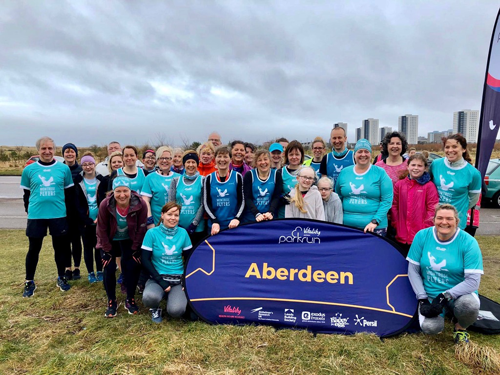
My approach was to be very organised, creative, and welcoming to all abilities and backgrounds. By focussing on structures, consistency, and communication with members, I believed that a club could be put in place that was lasting and larger than any individual or group. Montrose Flyers Running Club grew continually over three years into an insured club with over 60 paid members. In that time everything that you would expect from an established running club was introduced in Montrose and it was a rewarding journey
After giving myself that pat on the back I could stop there. But that is not very interesting, and it is not the whole story. The whole story includes the fact that setting up an established running club was also very challenging in ways that I did not fully appreciate when I started. For those who are wondering how to start a running club, I have structured this post into the key things that I think you should know before you start. Of course, you may just have a chuckle at my expense and not do any of it!
What is a running club?
Anyone can run with a group of friends – but that is not a running club. Anyone can set up a club on Strava or Facebook – but that is not a running club either. Running clubs are small organisations which should have all (or most) of the following:
- Logo & Brand
- Multiple sessions each week
- Insurance policy/athletics body affiliation
- Membership system
- Fees
- Constitution
- Committee
- Club rules/code of conduct
- Members discounts
- Club championship
- Newsletter
- Prizes
- Members with coaching qualifications
- AGM
- Website
- Merchandise
- Motto
- Kit
- Beginners/C25K programme
A positive, long-term impact can be made in your community when these structures are put in place. Running clubs are community and longevity, they require big picture thinking.
Your local area
When I eventually decided to start a running club in Montrose, I quietly checked to see what others were doing in my town. Even though I was an experienced runner with knowledge of the club scene, I still did my homework. I went to a few sessions with Montrose Triathlon Club and visited St Cyrus Solos. Both clubs provided encouragement and good-natured banter. I also enquired about the ambitions of a local group which had graduated from Couch to 5K and were continuing to meet up in Montrose.
The organisers of Montrose parkrun were very reluctant to support the efforts of the running club in their town. This could have been due to the over-confidence organising a local event with national backing gave them – or because the core team were already involved with another club outside Montrose. Either way it was hardly community thinking.
If you have aspirations to get involved with a club then you should do your homework. Your town/city probably already has a running club, and you could offer practical support to those already dedicating a lot of time and effort. If there is a genuine gap in the market – brace yourself for the ride!
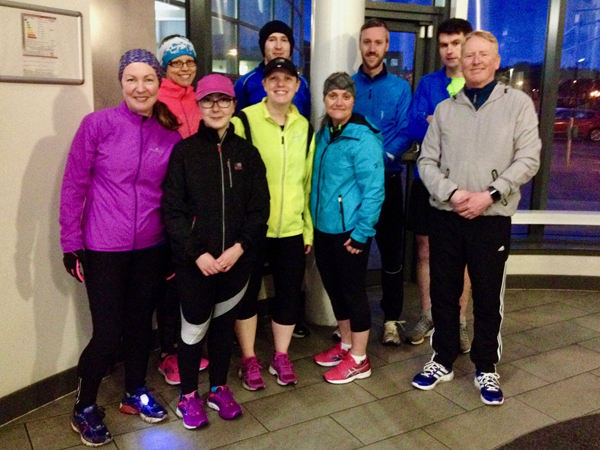
The running “community”
The running community is simply made up of those who run, and like any group of people you will encounter all sorts. Whilst you are building a club some will be very kind and supportive. Many will simply want to come along to run with others – amen to that. But if you are successful, then some self-appointed community leaders will become increasingly problematic. I won’t bore you with all the details of the petty encounters I faced – but you should know that these will increase with your success. Counter intuitively the better a job you do in attracting runners to your club – the more you will spend your time dealing with unreasonable emails, texts, and calls.
The reasons that people run
What I have always loved about running is the accessibility of it. You don’t need to have much money, skill or talent to start, and there are no barriers in terms of background. It is also not difficult to take up running later in life. The vast majority of us can work at getting better at running and see impressive results. Everyone is welcome.
The challenge is that in the context of a running club, ‘everyone’ includes those who don’t seem to enjoy running very much. Those who join a tennis or judo club will probably (at a minimum) show enthusiasm for tennis or judo. The same cannot be taken for granted at a running club where often social, health, and mental health reasons are priorities, and the activity itself secondary.
Providing a structure which encourages those who would not normally take part in sports to get active is a very worthwhile thing to do – and the amount of new runners attracted to Montrose Flyers was impressive. But you will sometimes find yourself responsible for the enjoyment of a group of people doing something that they don’t enjoy.
When I embarked on this project, I also hoped to attract many like-minded runners. Those who weren’t going to the Olympics any time soon – but enjoy the sport and may have been running before GPS devices were common. We did have success in attracting very regular runners to the club, but it is a harder thing to achieve as less of them exist (particularly in a small town). Despite our membership comprising of a majority of beginners, social, and irregular runners – I always made sure the club remained inclusive. Inclusivity includes including the minority – even if they are faster than you.
Your challenge in creating a large running club (particularly in a small town) will be in catering for the different reasons people have for running. This can be achieved by organising varied sessions and structuring events in smart ways which allow for flexibility. If you successfully get to the point where you have 20 or 30 runners attending, you may want to consider grouping runners based on pace. Organising a club championship will encourage members of all abilities to attend local races with a common purpose.
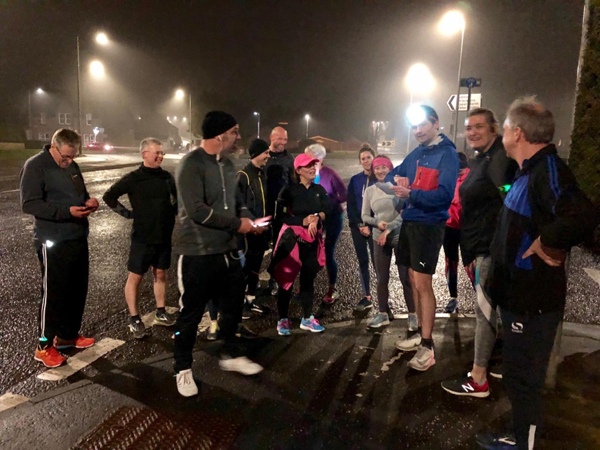
The benefits and downsides of social media
My observations about social media in the context of a running club are no different from those on social media more generally – there are benefits and downsides. If you are trying to grow a running club then Strava and Facebook are very useful tools to make a noise. I enthusiastically used social media to communicate with members (and potential members) and posted photos regularly to show the growth of the club – it is your job to get the people going.
The downside is that by communicating in this way you are also providing a platform in your club for those with negative and unhelpful comments. It is also true that a diet of kudos and selfies can be very rich, and in my opinion unsustainable motivation long term – but I should save that topic for a separate post.
Saying no has consequences
As Montrose Flyers Running Club grew, having to say no to members became an issue. Throughout the process of building a running club I sought to engage with those who could potentially help and become committee members.
The problem is that when I said – “would you like to help?” many people saw that as an invitation to influence without commitment. Because I did request feedback from members, and observed what worked, the club continually adapted and grew. But I also believed in always making the club attractive to new runners of all abilities and backgrounds (not a closed shop for the interests of current members).
This sometimes meant I said no to those with what I considered to be short sighted or narrow ideas/motives. I wanted to work with those who shared the goal of creating an inclusive, lasting running club and were willing to work towards it. In my experience the difficulty was not in saying no – but that in a club, some members think that you don’t have the right to.
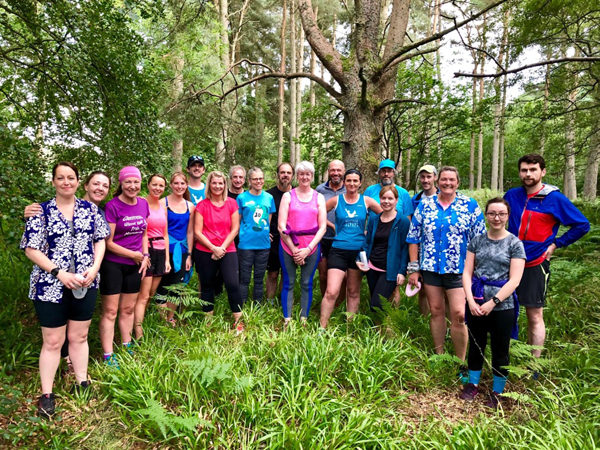
A running club is bigger than you
If you start a running club on your own, then you clearly can’t deliver democracy and a committee immediately. Even if you could I doubt it would be helpful as you won’t attract many runners initially, (never mind those who really want to take on the burden of organisation). Like me you will probably push things forwards yourself and over time find members to work with. You (and those who help you) will make more decisions as the club grows. But if you are serious about creating a lasting running club, then you must pass things over to an elected committee at some point.
I stood down and handed the reigns over to our first elected committee at the end of three years. I enjoyed the project of delivering a running club and wanted to see all the key structures put in place before fully stepping aside. However, in the end, to truly achieve the goal of setting up an established running club it has to be able to function without you. Montrose Flyers Running Club is still flying two years on, which I am really proud of.
You must bring others with you
I did find members who wanted to help me in a meaningful way – one in particular was a great sounding board and support to me as the club grew. Our differences in approach and outlook were a strength to the club as we shared a willingness to commit our time and work together.
Members like this will help you put structures in place, build a club culture, and communicate with members of your growing club in a different way. They should respect your efforts and want to work with you. In return you should listen to them, and involve them in decision making and plans to eventually replace you as chairperson.
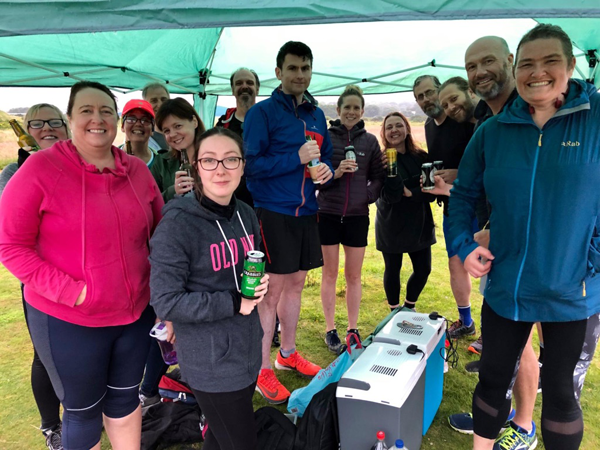
Big club mentality
In this post I wanted to outline some of the key things that you should know before setting up a running club. This led me to often reference the challenges and negativity I faced. However, now that I am simply a member and supporter of Montrose Flyers Running Club I look back and see the many positives and the opportunity I took to develop personally. In building a running club you will meet some good people and have a lot of fun.
For me, this was particularly true in the spring/summer of 2019. At that point we had a broad group of runners entering into an increasingly ambitious series of events in a positive way. We had handicap runs, easy going social runs, long runs, hill reps, relay races, head-torch runs, team challenges, beach runs, drills, running pub crawls, summer holidays… It went on and on over a minimum of two sessions a week – and sometimes three.
It was a lot of work, but it was also often rewarding. I learned a lot about organisation, communication, leadership, and motivation and of course made a few mistakes along the way. I am pleased to have left a bank balance of over £1000, and a constitution which commits the club to gender balance and to making a yearly cash donation to good causes.
Most of all though I am proud to have motivated a large group of strangers from diverse backgrounds and abilities to come together to get active/improve. With a thick skin and a big club mentality you can definitely overcome the many challenges you will face to create an established running club in your town/city. Thank you to the members of Montrose Flyers Running Club for your time, effort, investment, and support.
My current project Race The Machine is currently open for entries to anyone in the UK/EU. Come and join us!

What names do you give the individual groups, so that runners on the day will know which group will suit their level?
Thanks.
Hi Richard, thanks for reading. The groups were improvers, intermediate and advanced. A lot of the time we just ran two groups, improvers and intermediate. 🙂
Great post! I’m starting a weekly running group here in Jakarta. We have done a few runs already and it’s been a lot of fun. My goals are to make workouts fun because you’re with friends, help people find friends, especially Expats that recently moved to Jakarta, and raise awareness for charities. I kind of hope that as we grow, I won’t have to deal so much with selfishness and power games. But we’ll see. I have fun and people seem to enjoy it too, that’s a good sign.
Thanks Danny, it is a very worthwhile thing to do and I’m sure you will have fun. Hopefully you benefit from my warts and all account.